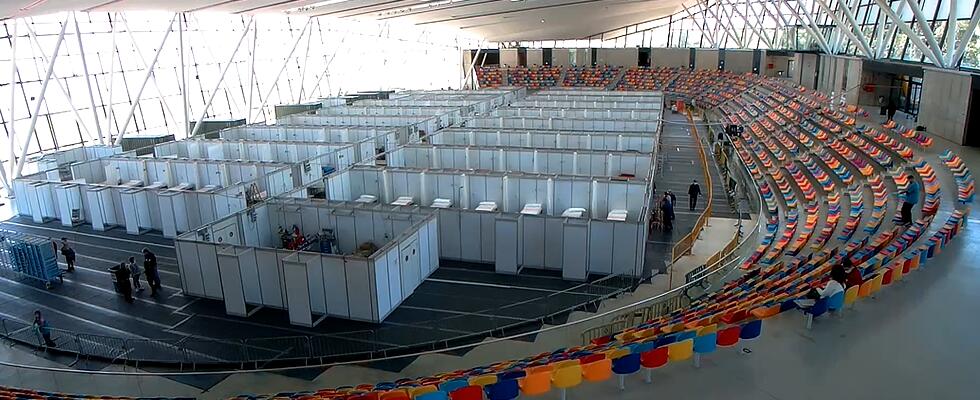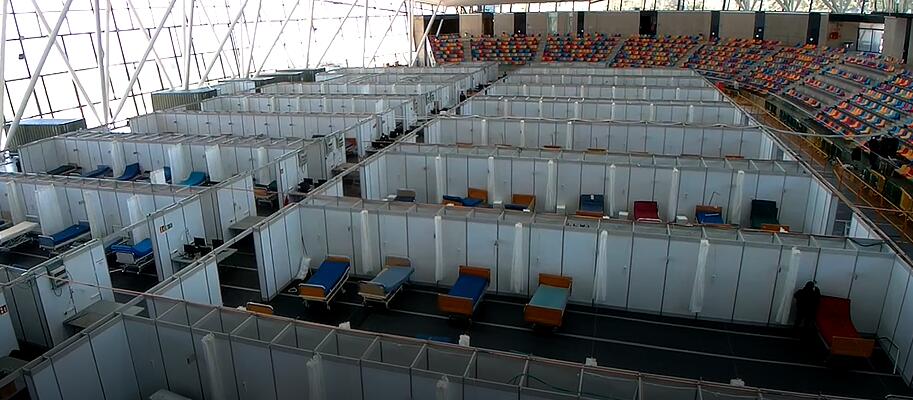
The fast-paced and constant development of technology has brought a wide range of changes in many industries. The introduction of new practices and tools is aimed at improving efficiency and quality on one side and reducing financial means and effort people have to invest when conducting a project on the other. In the light of these circumstances, lately, there has been a serious debate among experts and relevant institutions whether the legalization of the use of drones for building inspections is a justifiable and smart choice. While we must admit that there are some downsides to this idea, it seems that the number of benefits is considerably higher, especially during the Covid-19 lockdown. The question arises – are we ready for using drones to inspect buildings or should we improve the practice and available drone models first?
How do drones fit the inspection procedures?
Drones are unmanned aerial vehicles that experts can pilot remotely for the purpose of collecting high-quality visual data very quickly. Used for building inspection, drones enable inspectors to detect issues easily and then perform repairs that are mandatory at short notice. Currently, the standard procedure is much more expensive, complicated, and time-consuming. Generally, it involves the installation of scaffolding and also the use of construction lift vehicles. It is evident that, given the circumstances, drones are certainly a much more efficient alternative everyone in this industry is eager to welcome.
How can we inspect buildings by using drone technology?
Using drone technology for building inspection includes a variety of options. Mostly, they are used for outside and inside hard-to-reach spaces which cause serious difficulties to inspectors. Some of the possible scenarios include:
· Roof inspection – For example, to confirm that the project to install an entirely new roof has been completed properly, inspectors, property managers, and building owners can use drones for visual inspection and taking aerial images. As a result, they will eliminate any doubt that the drainage of the roof system, for example, is impeccable.
· Inspection of the overall condition of the site. – Gaining total control over the overall condition of the site is a genuinely viable option with the use of drone technology. It enables fast collection of all the relevant data without the physical inspection conducted by the inspector in charge.
What are the benefits of using drones to inspect buildings
As you can deduct from the above-mentioned facts, the benefits of using drones to inspect buildings are numerous. These are some of the most critical ones:
· They save lives – Without drones, getting physically involved in each and every inspection process is imperative. This further means that inspectors frequently have to get involved in difficult, high-risk situations in order to inspect the state of a building properly.
· They save time – Using drones to inspect buildings requires considerably less time than building scaffolding, which is the only alternative.
· They save money – Understandably, investing in drone technology is of key importance. Furthermore, the whole investment is cost-effective and requires fewer financial means than the aforementioned scaffolding.
· They offer a solution to the lack of manpower – When using drones to inspect buildings, the inspection can be conducted by a single qualified, knowledgeable, and experienced inspector capable of piloting a drone properly to collect all the relevant data.
· They are reliable - Although we cannot utilize drone technology to solve all types of inspection-related problems, in most situations, a drone with a top-quality camera can record issues and damages the inspector’s eye cannot detect. Also, drones with latest-generation thermal cameras can detect heat leaks easily and very fast.
· The data they collect is easily shareable – Once you gather the necessary visual inspection data, you can share them with multiple other relevant people who need to be introduced to the existing issues.
The downsides of embracing drone technology at present
Undoubtedly, the whole tendency to embrace drone technology as soon as possible encounters numerous obstacles. The main reason lies in the fact that most of the existing drone models have certain limitations that need to be eliminated prior to officially legalizing using drones to inspect buildings. Here are some facts that present limitations in this field:
· The current drone models lack in accuracy. - Under certain conditions, the visual data collected by using drones can be of not-so-impressive quality, which may make the further analysis more difficult to conduct. If we remember that each detail matters in construction and architecture and that experts pay attention to the slightest details and even choose light bulbs for an architectural projects, these are the flaws necessary to eliminate.
· Investing in proper licenses is imperative. – While maneuvering drones is not difficult to master, it can only be conducted by a professional inspector who possesses an FAA (Federal Aviation Administration) license. Also, the drones inspectors or operators use have to be registered with the FAA, too.
· Using drones is subject to certain limitations. - Even with a proper license to pilot a drone or your effort to use a waterproof drone, you cannot use this aerial vehicle wherever you want. For example, airports are a forbidden zone. Also, there may be a limit in terms of the altitude a drone must not exceed.
Drones used for patrolling during the Covid-19 lockdown
During the Covid-19, governments also use drones to patrol the buildings and appeal for social distancing, as lockdown is taken to stem further disease outbreak. According to BBC News, China has previously used drones to patrol people and police in Spain used drones to check the streets for anyone ignoring Stay-Home-Order.
When people are not allowed to go outside, drones could bring much fun and consolation. Spain has captured many stories via drones and made them open to the local people. SplashDrone 3+ was also chose to inspect a converted hospital. Drones play a important role during the epidemic, just like our eyes.

Conclusion
More and more it becomes evident that using drones to inspect buildings will become a usual practice very soon, even after the epidemic. We cannot neglect the fact that some improvement in this field is still mandatory to create the optimal surrounding for introducing drones officially into the sphere of building inspection. Undoubtedly, embracing drone technology will be a giant step forward towards efficiency, accuracy, stability, and cost-effectiveness. Its future contribution to building maintenance and construction is yet to be revealed.



